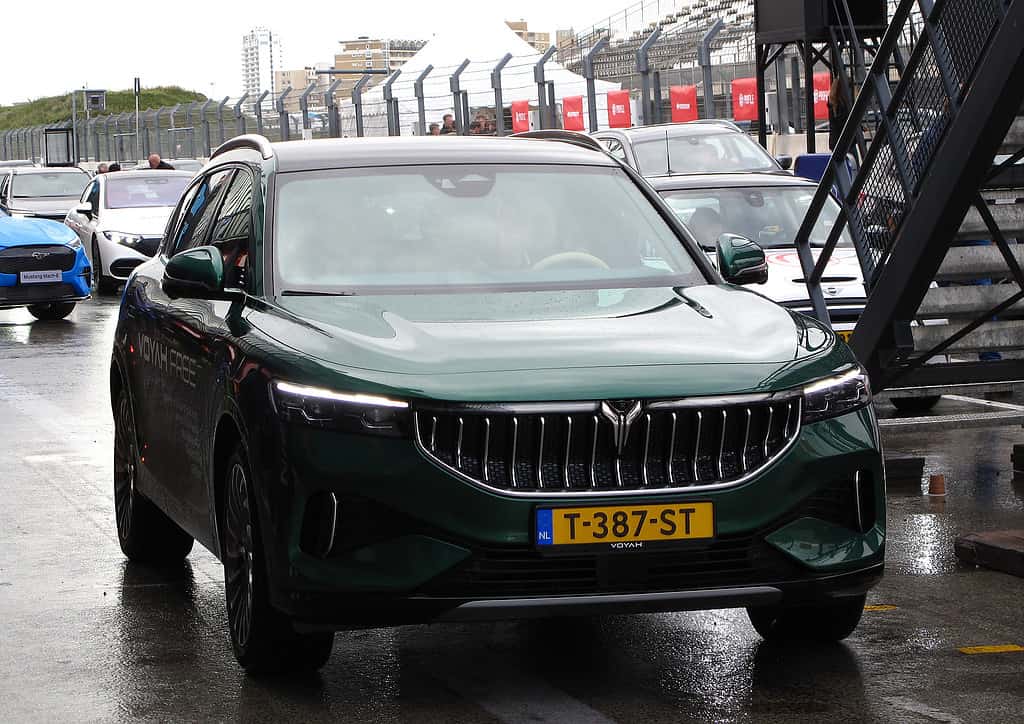
European Union and China have found themselves at a crossroads over electric vehicles (EVs) and green technologies. The concern is that Chinese EV manufacturers have an unfair advantage thanks to government subsidies. This has prompted a probe by the European Commission to visit and investigate BYD, Geely, and SAIC — the three most important Chinese-owned EV manufacturers — to determine whether the EU should impose higher tariffs to protect European carmakers. China is, as you might imagine, not happy at all about this.
The heart of the European Union’s concern lies in the alleged artificial price suppression of Chinese EVs through a combination of substantial state subsidies and aggressive industrial policy. The country’s exports in this sector, along with solar energy products and lithium batteries, have seen remarkable growth, contributing to a record $139.3 billion in green exports in 2023.
Such practices, according to European Commission President Ursula von der Leyen, distort the market to a degree unacceptable both within and outside the EU’s borders.
“We do not want to see decoupling from China,” European Commission President Ursula von der Leyen told reporters on a visit to Beijing to see President Xi Jinping in December. “What we want to see is de-risking.”
De-risking or another trade war?
This stance has sparked a series of retaliatory measures, including Beijing’s anti-dumping probe into European brandy, signaling a tense trade atmosphere that could have broader implications for international relations and commerce.
Since 2009, the Chinese government has supported the electric vehicle (EV) industry by providing financial incentives to both producers and consumers. This support includes subsidies for public transport and taxi services, as well as for private EV purchases. Over the years, these subsidies have amounted to a significant investment, with more than 200 billion yuan (approximately US$28 billion) allocated towards EV subsidies and tax breaks from 2009 to 2022. In 2023, China unveiled a massive 520 billion yuan (US$72.3 billion) package of tax breaks over four years, its biggest yet.
That’s formidable government help for China’s EV industry. However, the EU isn’t slacking, offering significant tax breaks for manufacturers, along with thousands of euros of subsidies per car for buyers, as well as tax credits for households and businesses that install EV chargers. Even non-EU European countries have generous EV subsidy schemes of their own, such as Norway’s SkatteFUNN.
The potential impact of Chinese EV dominance is particularly alarming for Europe’s automotive-centric economies, with predictions of significant financial losses looming on the horizon. The competitive pricing of Chinese EVs, often 20% lower than their European counterparts, threatens to capture a larger market share, thereby challenging established automakers and European economies reliant on the automotive industry.
Despite facing a 10% tariff in the EU—significantly lower than in the U.S. (27.5%)—Chinese EV makers have aggressively targeted the European market. They can still sell at a high margin despite the current tariff. Chinese EVs have an 8% market share in Europe, which is expected to reach 15% by 2025. Overall, including EVs and combustion engine vehicles, China is now the world’s largest car exporter, having recently overtaken Japan.
A trade war will only hurt the environment more
Soon, EU investigators will visit Chinese EV plants to determine if punitive tariffs are necessary to level the playing field. Yet, this move has sparked tension. China criticizes the EU’s actions as unfair and protectionist, arguing that Europe also subsidizes its industries. The situation is delicate, with both sides recognizing the need to avoid a trade war that benefits no one.
In navigating these turbulent waters, both China and the EU face a critical test: how to reconcile their economic ambitions with the global imperative of a green transition. EVs are featured prominently in mitigation pathways meant to limit warming to well below 2C or 1.5C, in line with Paris Agreement targets. For instance, in the UK in 2019, the lifetime emissions of driving a Nissan Leaf EV were about three times lower than for the average fossil fuel-powered car, even before accounting for the falling carbon intensity of electricity generation during the car’s lifetime.
As the world grapples with climate change, these sorts of feuds and political games hurt not only consumers but also the environment. Healthy competition among international EV manufacturers helps drive innovation and lower costs, which ultimately encourages more people to transition to electric.
However, the path forward remains complicated. Tensions between China and the EU (and also the USA) have only grown in recent years, partly due to Beijing’s close ties with Moscow following Russia’s invasion of Ukraine.






